How Do Black Carpet Beetles Get in Your House
ENTFACT-601: Carpet Beetles | Download PDF
by Michael F. Potter, Extension Entomologist
University of Kentucky College of Agriculture
Carpet beetles, as their name implies, sometimes infest carpets. Similar to clothes moths, the pests also feed on many other items composed of wool, fur, felt, silk, feathers, skins, and leather. Such materials contain keratin, a fibrous animal protein which the larvae are able to digest. Cotton and synthetic fabrics such as polyester and rayon are rarely attacked unless blended with wool, or heavily soiled with food stains or body oils. Infestations of carpet beetles can develop undetected, causing harm to vulnerable items.
Facts about Carpet Beetles
Carpet beetles are common in dwellings, and their damage is often mistaken for that of clothes moths.(For more information about clothes moths, see University of Kentucky Entomology Entfact-609.) The adults are small (1/16 to 1/8-inch), oval-shaped beetles ranging in color from black- to various 'mottled' patterns of white, brown, yellow and orange. Adult carpet beetles feed on flower pollen and do not damage woolens and other fabrics. In springtime, they often appear on windowsills, suggesting an infestation may be present inside the home. Female beetles lay about 50-100 eggs on or near vulnerable materials. While some breeding sites may be obvious (e.g., a wool rug stored in a closet), others can be subtle—for example, accumulations of pet hair associated with baseboards, air vents and ducts.
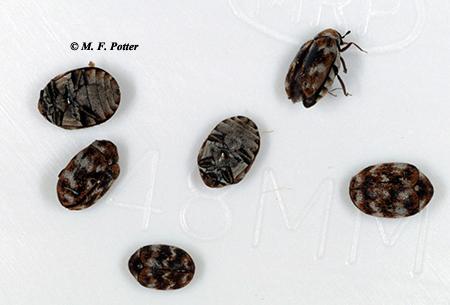
Fig. 1: Adult carpet beetles are small and often appear speckled or mottled.
In a few weeks, the tiny eggs laid by adult beetles hatch into the fabric-consuming larvae. Larvae are about 1/8 to 1/4-inch long, tan to brownish in color, slow moving, anddensely covered with hairs or bristles.The developing larvae also leave behind shed (molted) skins. As they graze along the surface of susceptible materials, they often leave threadbare spots and irregular holes.
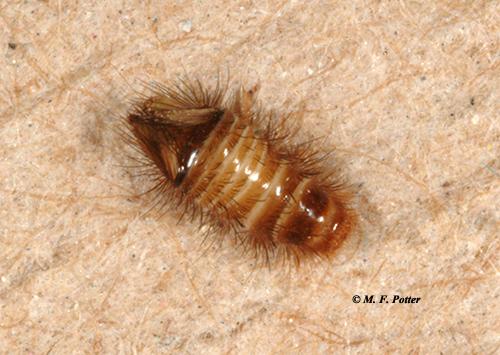
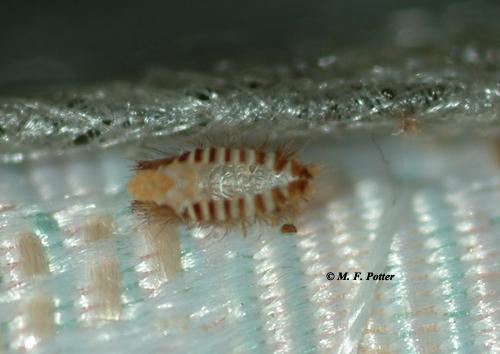
Fig. 2: A typical larva (top) and shed skin (bottom).
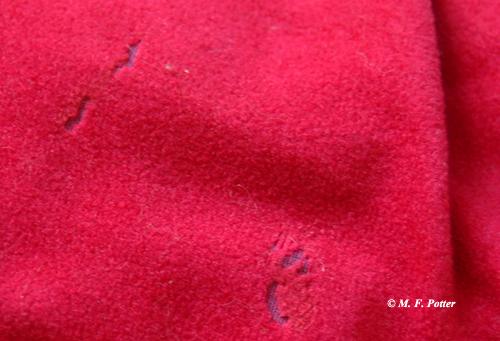
Fig. 3: Feeding damage caused by carpet beetles.
As noted earlier, carpet beetle larvae feed on animal-based materials, especially wool, felt, fur, silk, feathers and leather. Commonly attacked items include sweaters, scarves, coats, blankets, rugs, down pillows and comforters, upholstery, toys, decorative items, and taxidermy mounts. The larvae often feed within fabric folds (hems, collars, cuffs, etc.) in closets, chests and boxes where items are stored for long periods. Clothing and blankets in regular use are seldom attacked; the same is true of rugs that are routinely vacuumed. Edges and undersides of rugs and carpets are more likely to be infested than areas out in the open.
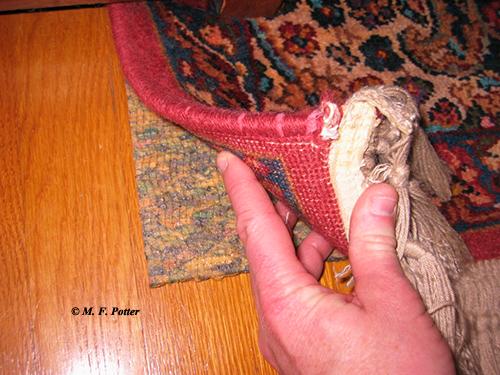
Fig. 4: Carpet beetles are often found around the edges of rugs and carpets.
Carpet beetles can also thrive on lint, hair, and debris accumulating under baseboards and inside floor vents and ducts. The pests can also proliferate on bird nests, animal carcasses, and dead insects (cluster flies, lady beetles, stink bugs, wasps, etc.), which tend to be associated with attics, chimneys, basements, and light fixtures. Unlike clothes moths, some varieties of carpet beetle will also infest seeds, cereals, pet food, and other plant-based materials. Because of this diverse diet, the pests may be found virtually anywhere in homes, often making elimination a challenge.
Managing Infestations
Preventing Infestations . As with clothes moths, the best way to avoid problems with carpet beetles is prevention. Woolens and other susceptible items should be dry-cleaned or laundered before being stored for long periods. Cleaning kills any eggs or larvae that may be present, and removes perspiration odors that tend to attract pests. Articles to be stored should then be packed in tight-fitting plastic bags or containers.
Householders intending to use moth balls, flakes or crystals should carefully read and follow label directions. The volatile, odiferous products containing naphthalene or paradichlorobenzene can be hazardous if used incorrectly. Never scatter them in open closets or other areas where children or pets can reach them. The vapors are only effective in deterring fabric pests if maintained at sufficient concentrations. Effective concentrations can best be achieved by sealing susceptible items (with the specified dosage of balls, flakes or crystals) in large plastic bags within tight-fitting trunks, totes, or boxes.
Valuable garments such as furs can also be protected from carpet beetles by storing them in cold vaults, a service offered by some furriers and department stores. Contrary to popular belief, cedar closets or chests are seldom effective in deterring fabric pests because the seal is insufficient to maintain lethal or repellent concentrations of the volatile oil of cedar.
Controlling Infestations .To eliminate carpet beetles, you must locate all infested items. The primary source may be a seldom-used wool or fur hat or scarf on a shelf in a closet; an antique rug stored in the basement; or the remains of a bird or squirrel nest up in the attic. Carpet beetles prefer to dwell in dark, undisturbed areas where susceptible items are stored for long periods. When inspecting clothing, pay attention to seams, folds, and creases (e.g. cuffs and collars) where larvae often prefer to feed. Larvae also tend to infest the lower edges of rugs and carpeting. Use needle-nose pliers to lift the outer edge of wall-to-wall carpet from the tack strip along baseboards. Other possible locations include under/within upholstered furniture, or inside floor vents and ducts with accumulations of pet hair and lint. As noted earlier, infestations may also stem from bird nests, animal carcasses, or accumulations of dead insects such as flies or lady beetles in attics or elsewhere. Plant-based materials (cereal, pet food, bird seed, etc.) stored in kitchens and basements, or cached by rodents, are other possible sources of carpet beetles.

Fig. 5: Carpet beetle larva feeding on a wool sports jacket. Concealed areas (e.g., cuffs, collars, fabric folds) are often preferred.
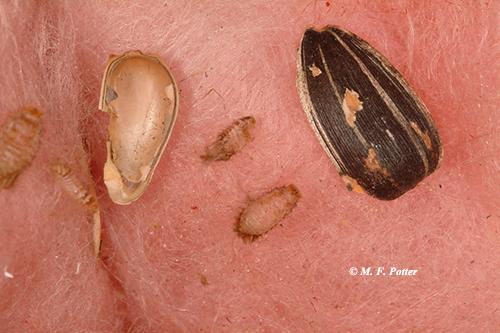
Fig. 6: Shed (molted) skins of carpet beetles associated with mice nesting in an attic.
Once found, infested items and susceptible articles nearby should be laundered, dry-cleaned or discarded. Bagging heavily infested items before disposal can help prevent further spread of the beetles. Dry-cleaning or hot laundering kills any eggs or larvae that may be present. Heat generated by a clothes dryer is effective as well. Vacuuming floors, carpets, and inside heating vents effectively removes larvae as well as hair and lint, which could support future infestations. Be sure to vacuum along and beneath edges of carpets, along baseboards, underneath furniture and stored items, and inside closets and quiet areas where carpet beetles (and clothes moths) prefer to feed.
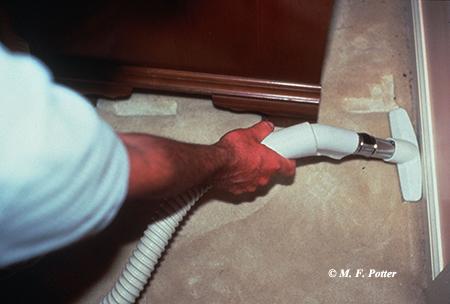
Fig. 7: Removing accumulations of lint and hair can help prevent problems with carpet beetles.
Insecticides applied to infested rugs and carpets may be helpful as a supplement to good housekeeping. Sprays recommended for flea control (see University of Kentucky Entomology Entfact-602), or with fabric insects listed on the label are effective. When treating, pay particular attention to carpet edges, floor/wall junctions, beneath furniture, and bottoms of closets. Infested clothing or bedding should not be treated with insecticides.
Additional Tips for At-Risk Groups
Detecting Infestations . Museums, rug-dealers, craft shops, furriers and taxidermists have much at stake in preventing carpet beetles and clothes moths. Museum collections, in particular, can be irreparably harmed by these pests making prevention a necessity. To minimize the risk, vulnerable items should be routinely monitored for signs of pest activity. Objects on display and in storage should be closely examined for holes, 'grazed' areas, detached hair, fur, or feathers, webbing, fecal pellets, larvae, or adult beetles. Since a favored food of the larvae is dead insects, insect collections maintained by museums and hobbyists should be checked regularly for accumulations of 'dust' and debris beneath specimens— a telltale sign that these pests are present. (Tightly sealed collection boxes can be protected from future attack by inclusion of moth balls or dichlorvos/DDVP-treated strips.)
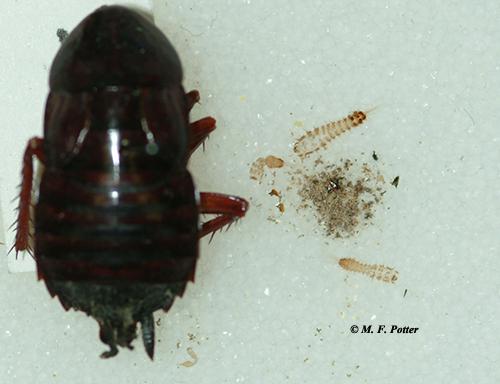
Fig. 8: Carpet beetles also scavenge on dead insects (note the shed skins and debris beside the cockroach carcass).
Glue traps provisioned with or without an attractant lure are also useful for detecting infestations. The traps are often effective at revealing infestations in the early stages when the pests are hard to find by inspection alone. Baited or non-baited traps may be placed on shelves, inside closets, or wherever susceptible items occur. In large storage or display areas, the devices can be installed in a grid pattern to help pinpoint infested materials, i.e., areas where higher numbers of beetles are captured tend to be closer to infested materials.
Traps for monitoring carpet beetles (and clothes moths) can be purchased online from such suppliers as Insects Limited (https://store.insectslimited.com). Since some varieties of fabric pests are attracted to a distinct odor, it is important to know which type of beetle or moth you have before ordering.
Thermal Disinfestation. Insecticide sprays are often of limited use against carpet beetles, since the pests are often within materials where sprays cannot penetrate. Risk of contamination and staining further negates their use on museum objects, clothing, etc. Such items can often be disinfested more effectively utilizing a household, chest, or walk-in freezer. In order to kill carpet beetles and clothes moths, infested items need to be held at minimum temperature of 0 degrees Fahrenheit for at least one week. Freezers capable of reaching minus 20 degrees F are able to kill all life stages within 72 hours.
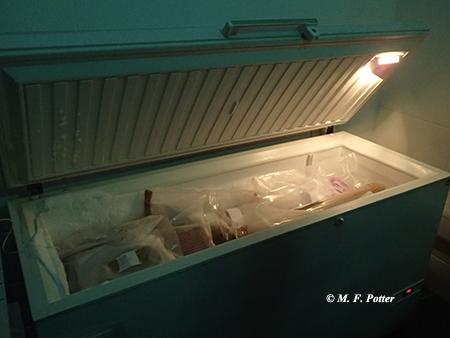
Fig. 9: Freezing is an effective way to kill carpet beetles and clothes moths.
Before freezing, articles should be placed in plastic bags, or wrapped in polyethylene sheeting and sealed with tape. This prevents frost and ice from forming on objects during chilling, and condensation after removal. After freezing, objects should be allowed to return to room temperature (for about 24 hours) before being unwrapped or further handled. Some items become brittle at low temperatures, and this will help to reduce breakage. For more tips on using cold (and heat) to control pests, see University of Kentucky Entomology Entfact-640, Thermal Disinfestation of Household Items. Another good online resource for managing pests in museums and other collection-holding institutions is http://museumpests.net/.
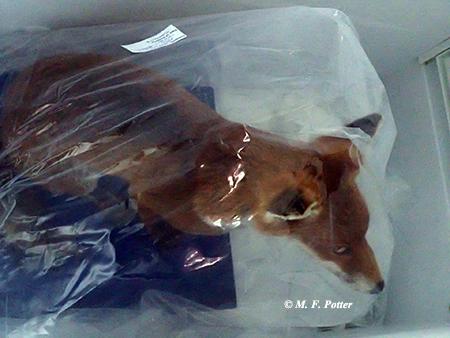
Fig. 10: Prior to freezing, items (such as this taxidermy mount) should be wrapped in plastic.
CAUTION: Some pesticides mentioned in this publication may not be legal in your area of the country. If in doubt, please consult your local cooperative extension service or regulatory agency. ALWAYS READ AND FOLLOW LABEL DIRECTIONS FOR THE PRODUCT YOU ARE USING.
Please note that content and photos in this publication are copyrighted material and may not be copied or downloaded without permission of the Department of Entomology, University of Kentucky.
How Do Black Carpet Beetles Get in Your House
Source: https://entomology.ca.uky.edu/ef601